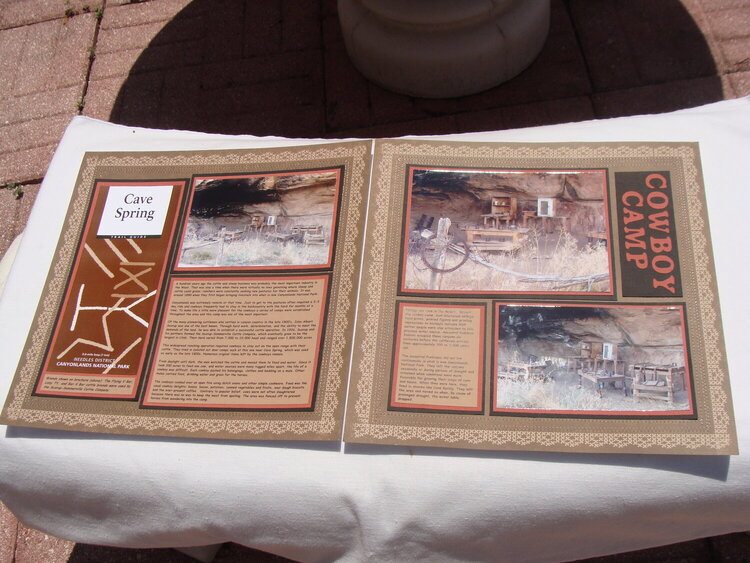

 Give a Cheer
Give a Cheer
Brands shown on brochure (above): The Flying V Bar, Lazy TY, and Bar X Bar cattle brands were used by the Scorup-Sommerville Cattle Company.
-------------
A hundred years ago the cattle and sheep business was probably the most important industry in the West. That was also a time when there were virtually no laws governing where sheep and cattle could graze; ranchers were constantly seeking new pastures for their animals. It was around 1890 when they first began bringing livestock into what is now Canyonlands National Park.
Canyonlands was extremely remote at that time. Just to get to the pastures often required a 2-3 day ride and cowboys frequently had to stay in the backcountry with the herd for months at a time. To make life a little more pleasant for the cowboys a series of camps were established throughout the area and this camp was one of the most important.
Of the many pioneering cattlemen who settled in canyon country in the late 1800's, John Albert Scorup was one of the best known. Through hard work, determination, and the ability to meet the demands of the land, he was able to establish a successful cattle operation. In 1926, Scorup and his partners formed the Scorup-Sommerville Cattle Company, which eventually grew to be the largest in Utah. Their herd varied from 7,000 to 10,000 head and ranged over 1,800,000 acres.
This widespread ranching operation required cowboys to stay out on the open range with their cattle. They lived in isolated out door camps such at this one near Cave Spring, which was used as early as the late 1800s. Numerous original items left by the cowboys remain.
From daylight until dark, the men watched the cattle and moved them to feed and water. Since it took 200 acres to feed one cow, and water sources were many rugged miles apart, the life of a cowboy was difficult. Each cowboy packed his belongings, clothes and bedding on a mule. Other mules carried food, drinking water and grain for the horses.
The cowboys cooked over an open fire using dutch ovens and other simple cookware. Food was the usual cowboy delights: beans, bacon, potatoes, canned vegetables and fruits, sour dough biscuits and the ever-present coffee. Contrary to popular belief, cows were not often slaughtered because there was no way to keep the meat from spoiling. The area was fenced off to prevent horses from wandering into the camp.
-------
Springs are rare in the desert. Beyond the cowboy camp, soot-blackened ceilings, hand prints, painted figures and grinding depressions on boulders indicate that earlier people were also attracted to this precious water source. Ancestral Puebloan Indians occupied these canyons six centuries before the cattlemen arrived, from approximately 700 to 1,000 years ago.
The ancestral Puebloans did not live continuously in what is now Canyonlands National Park. They left the canyons seasonally or during periods of drought and returned when conditions were more favorable for growing their crops of corn and beans. When they were here, they lived in alcoves like Cave Spring. They left the area and moved on when, be cause of prolonged drought, the water table dropped.
No products have been added to this project.
Thanks for spreading positivity!
April 06, 2012
September 14, 2011
September 06, 2011
September 04, 2011
September 04, 2011
September 03, 2011
September 03, 2011
September 03, 2011
September 03, 2011